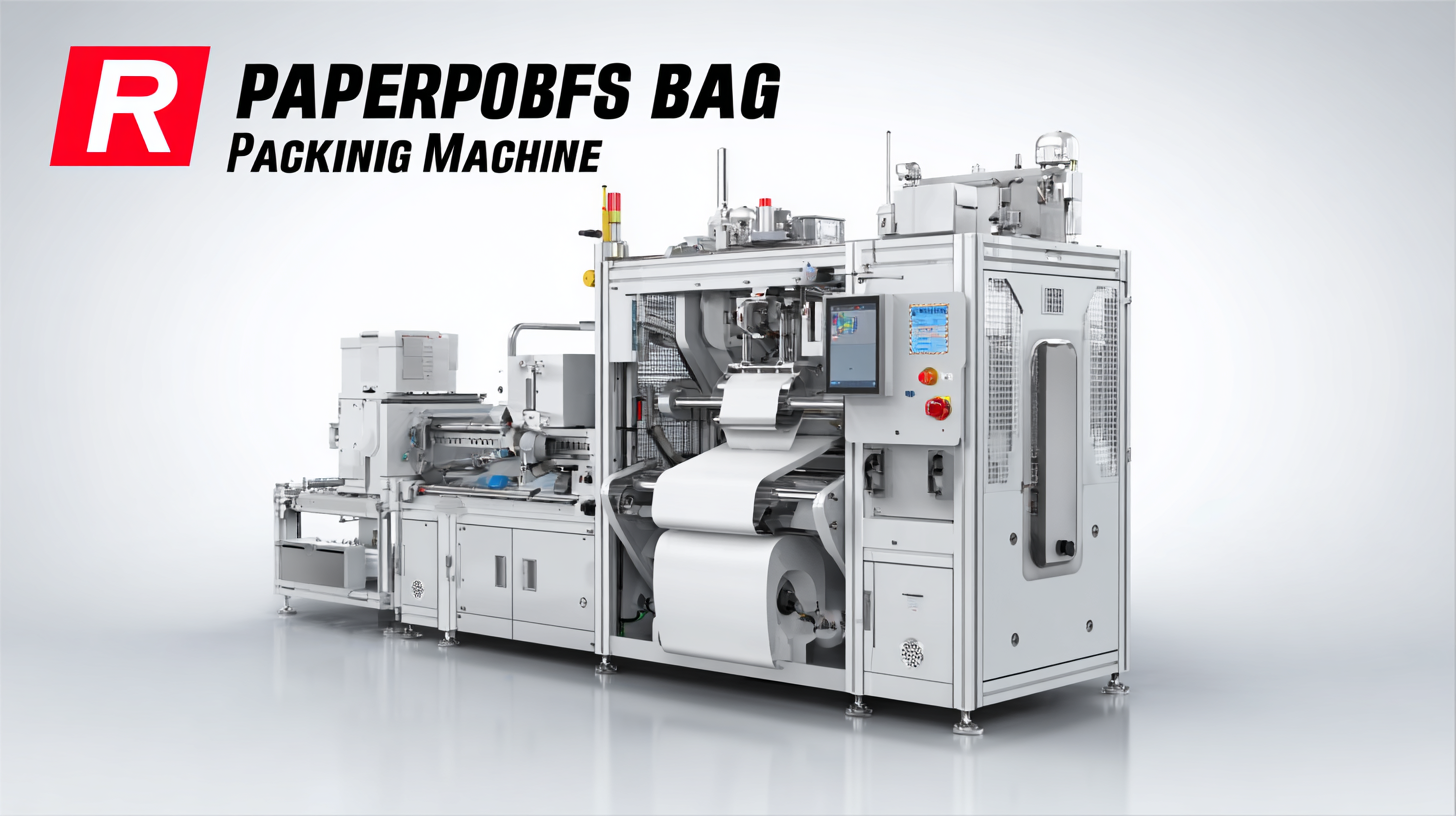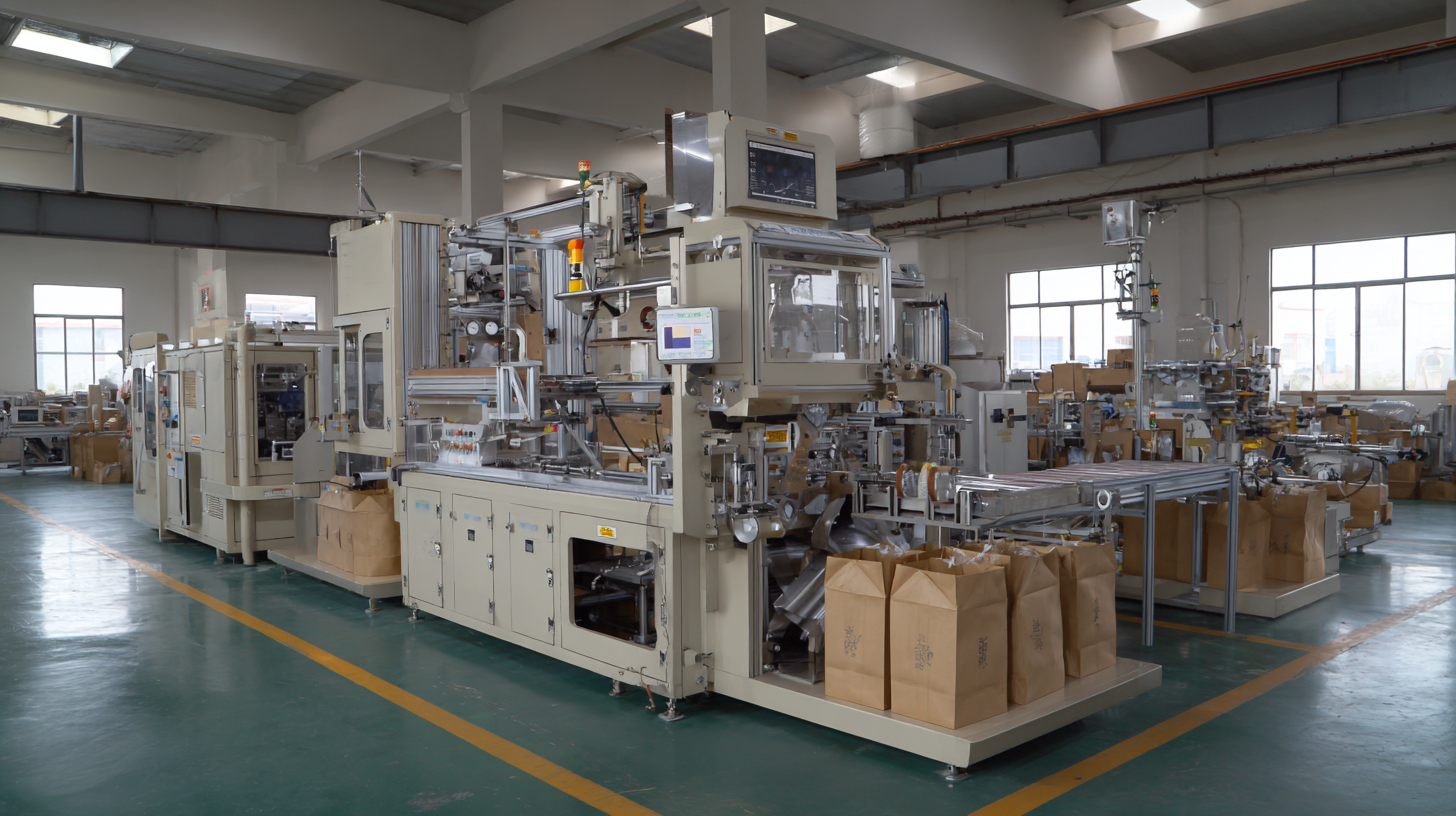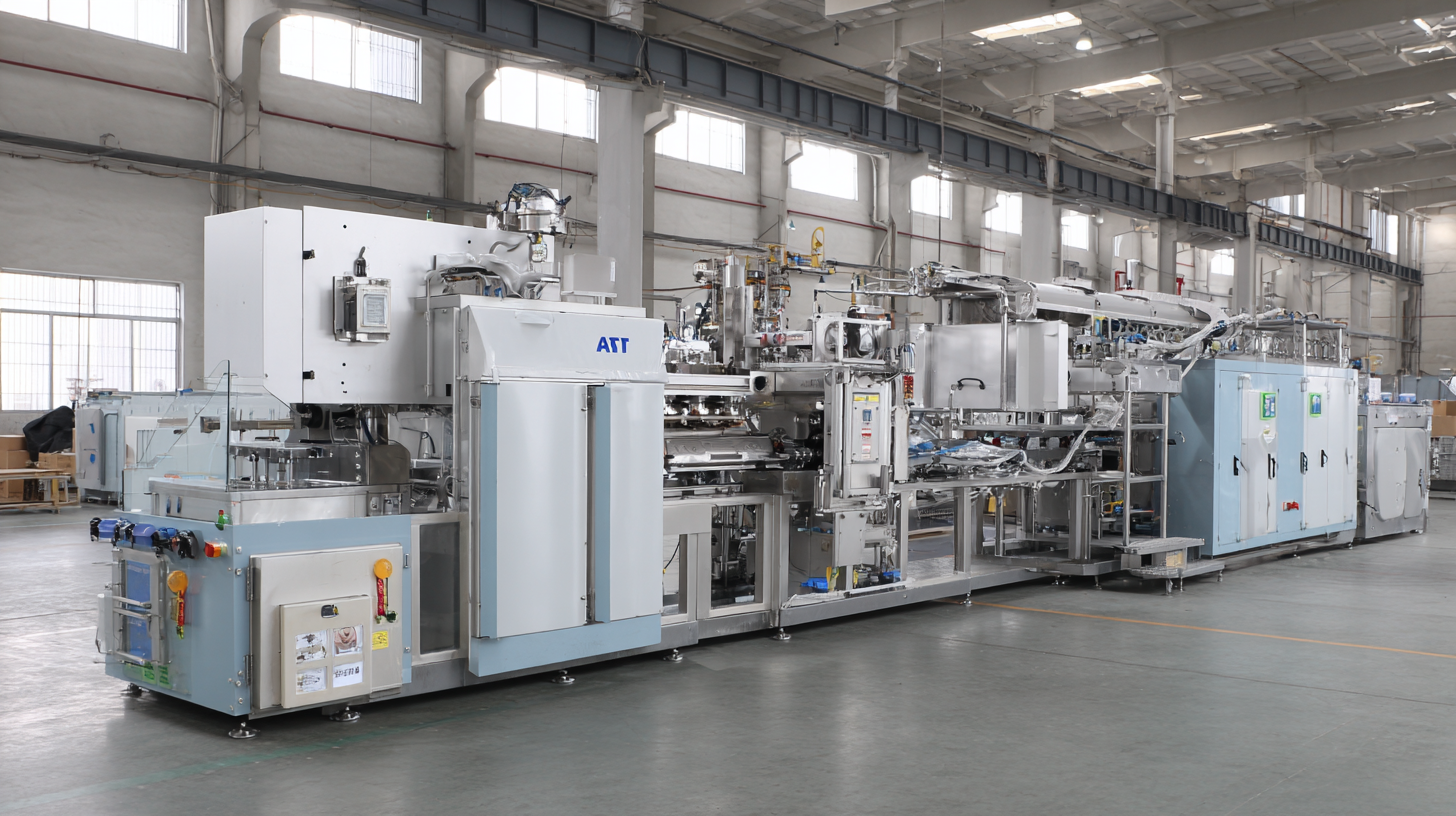
Common Challenges Faced by Buyers of Best Paper Bag Packing Machines
In today's eco-conscious market, the demand for sustainable packaging solutions has surged, leading to a significant increase in the production of paper bag packing machines. According to a recent industry report by Smithers Pira, the global paper bag market is projected to grow by 4.4% annually, reaching approximately $5.9 billion by 2026. As businesses shift towards environmentally friendly options, selecting the right paper bag packing machine becomes paramount.

However, buyers often face common challenges, such as identifying high-quality manufacturers that meet stringent production standards and understanding the intricate specifications of various machines. This blog aims to explore these hurdles and offer insights on how to choose a reliable manufacturer of paper bag packing machines, ensuring that companies can efficiently meet consumer demands while maintaining sustainability.
Common Quality Control Issues in Paper Bag Packing Machines: How to Overcome Them
When investing in paper bag packing machines, quality control is a paramount concern for buyers. One common issue is inconsistent bag dimensions, which can lead to packaging defects and increased production costs. According to a recent report by Smithers Pira, nearly 30% of packaging producers experienced dimensional irregularities in their output, underscoring the importance of precision during the manufacturing process. Implementing regular calibration checks and utilizing advanced sensors can significantly mitigate these quality issues, ensuring that the machines operate within specified tolerances.
Another prevalent challenge is the maintenance of adhesive application consistency, which is crucial for the integrity of paper bags. A study published by the Packaging Machinery Manufacturers Institute (PMMI) revealed that improper adhesive management accounts for up to 20% of production downtime in the packaging sector. Regular maintenance schedules, along with the adoption of modern adhesives, can help manufacturers overcome these hurdles. Furthermore, training operators on proper machine handling can lead to improved performance and reduced waste, ultimately enhancing product quality and operational efficiency.
Cost Analysis: Understanding the Investment and ROI of Paper Bag Packing Machinery
 When investing in paper bag packing machines, buyers must navigate complex cost analyses to fully understand their return on investment (ROI). A recent industry report indicates that the global market for paper packaging is expected to reach $400 billion by 2026, with a compound annual growth rate (CAGR) of 4.5%. This surge reflects an increasing consumer preference for sustainable packaging solutions, highlighting the potential for profitable investment in high-quality packing machinery.
When investing in paper bag packing machines, buyers must navigate complex cost analyses to fully understand their return on investment (ROI). A recent industry report indicates that the global market for paper packaging is expected to reach $400 billion by 2026, with a compound annual growth rate (CAGR) of 4.5%. This surge reflects an increasing consumer preference for sustainable packaging solutions, highlighting the potential for profitable investment in high-quality packing machinery.
The initial investment for a state-of-the-art paper bag packing machine can range from $20,000 to $200,000, depending on the machine's capacity and features. However, purchasers should also consider ongoing operational costs such as maintenance, labor, and raw material expenses. Research shows that companies investing in automated packing solutions can reduce labor costs by up to 30%, significantly improving their overall efficiency. Furthermore, a well-implemented machine can increase production capacity by 50%, leading to a faster ROI. Buyers should meticulously weigh these factors to maximize the financial benefits of their investment, ensuring they choose machinery that aligns not just with their operational needs but also with long-term sustainability goals.
Technological Advancements in Paper Bag Manufacturing: Trends for 2025
As we approach 2025, the paper bag manufacturing industry is witnessing significant technological advancements aimed at enhancing efficiency and sustainability. Innovations such as automated bag-making systems and smart manufacturing processes are transforming production capabilities. These technologies not only reduce waste but also improve product quality and consistency, allowing manufacturers to meet the ever-growing demand for eco-friendly packaging solutions.
When considering the adoption of new machines, buyers should keep in mind a few essential tips. First, thoroughly assess the machine's compatibility with your existing production line; seamless integration can save time and minimize disruptions. Second, look for machines that offer adaptability, ensuring they can accommodate various bag sizes and styles as market preferences evolve. Finally, prioritize energy-efficient models, as they contribute to lower operational costs and align with sustainability goals that consumers increasingly value.
Moreover, keeping an eye on emerging trends such as digital printing and customizable designs can help businesses differentiate their offerings in a crowded market. By embracing these technological advancements and strategic considerations, buyers can navigate the challenges of purchasing the best paper bag packing machines while positioning their businesses for future success.
Common Challenges Faced by Buyers of Best Paper Bag Packing Machines - Technological Advancements in Paper Bag Manufacturing: Trends for 2025
| Challenge | Description | Trend for 2025 |
|---|---|---|
| High Initial Investment | The upfront cost of advanced packing machines can be prohibitive. | Increased availability of financing options and leasing models. |
| Technological Familiarity | Operators may lack the necessary skills to use advanced technology. | Growing emphasis on training programs and user-friendly interfaces. |
| Maintenance Costs | Regular maintenance and possible repairs can add to operational costs. | Development of predictive maintenance technologies to lower costs. |
| Supply Chain Issues | Delays in obtaining materials can hinder production. | Shift toward local sourcing and diversified supplier networks. |
| Regulatory Compliance | Meeting various environmental regulations can be challenging. | Increased focus on eco-friendly materials and processes. |
Supply Chain Challenges: Sourcing Materials for Efficient Paper Bag Production
The transition from plastic to paper packaging presents significant supply chain challenges that buyers of paper bag packing machines must navigate. One of the primary obstacles in sourcing materials for efficient paper bag production is the availability and quality of sustainable paper products. As market demand for environmentally friendly packaging continues to rise, suppliers are under pressure to provide materials that meet both sustainability standards and production specifications. This creates a complex landscape for manufacturers who must ensure a steady supply of high-quality paper, often requiring them to establish strong partnerships with responsible suppliers.

Logistics also play a crucial role in the supply chain challenges faced by paper bag manufacturers. The need for just-in-time inventory and efficient distribution networks is heightened by the growing urgency to reduce plastic pollution while meeting consumer demands for sustainable alternatives. Furthermore, the adoption of advanced technologies such as big data analytics can enhance inventory management and facilitate real-time decision-making, helping companies optimize their operations. Embracing these innovative approaches will be essential for overcoming the supply chain hurdles that come with producing the best paper bags, ultimately contributing to a broader movement towards sustainable packaging solutions.
Compliance and Sustainability: Navigating Regulations in the Paper Bag Industry
In the ever-evolving paper bag industry, compliance and sustainability are at the forefront of buyers’ concerns. With a notable increase in regulations aimed at reducing plastic usage—such as the recent European Union directive mandating a reduction in single-use plastics—manufacturers of paper bag packing machines must adapt swiftly. According to a report by Smithers, the paper bag market is expected to grow at a CAGR of 4.5% from 2020 to 2025, reflecting increased consumer demand for sustainable packaging solutions. Buyers need to be well-versed in the relevant regulations that govern material sourcing, production standards, and waste management to ensure their suppliers meet compliance requirements.
Tip: When evaluating potential suppliers, always inquire about their certifications and compliance with local and international regulations. Checking for third-party certifications can provide assurance of adherence to sustainability practices.
Navigating sustainability isn’t just about meeting regulations; it also involves understanding the environmental impact of production processes. According to the Paper and Packaging Board, paper bags are recyclable and can be produced from renewable resources, making them a preferable alternative to plastic. However, it is critical for buyers to consider the entire lifecycle of paper bag manufacturing, from sourcing raw materials to the end-of-life recycling options.
Tip: Invest in machines that not only meet compliance standards but also incorporate energy-efficient technologies to minimize your carbon footprint. This not only aligns with sustainability goals but can also lead to cost savings in the long run.
Common Challenges Faced by Buyers of Best Paper Bag Packing Machines
This chart illustrates the common challenges faced by buyers in the paper bag packing machine industry, particularly focusing on compliance and sustainability regulations. The data highlights the percentages of buyers experiencing various challenges.